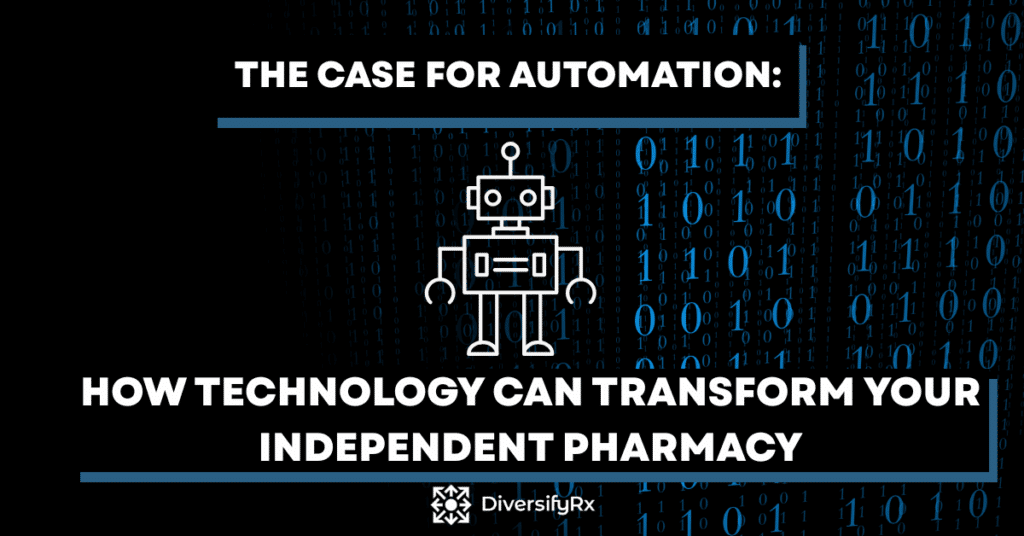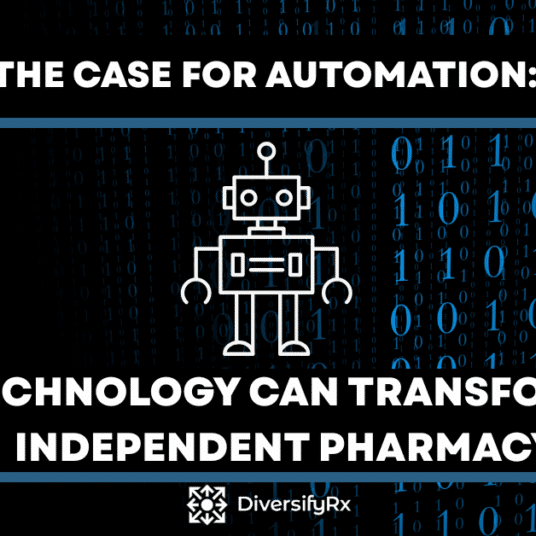Running an independent pharmacy means balancing inventory, staff, compliance, and patient care—all at once. Pharmacy automation offers a powerful solution: save time, boost accuracy, enhance efficiency, and elevate patient care—without having to hire a bunch of staff. Technology can truly transform your pharmacy. Here’s how to integrate pharmacy automation into your operations.
What Pharmacy Automation Looks Like
Pharmacy automation streamlines repetitive tasks, allowing your team to focus on patient care. Common tools include:
- Robotic dispensing systems – handle counting, labeling, and dispensing
- Inventory management software – track stock levels, expirations, and reorder points
- Medication synchronization tools – align refill schedules for better adherence
- Patient communication platforms – send reminders for refills, automatically post to social media or send patients emails.
Begin with one system that solves your biggest pain point, then expand gradually.
I have a long, loving relationship with pharmacy automation. Having “grown up” in California pharmacy, it was a necessity due to the restrictions on the number of pharmacy technicians from the SBOP. I quickly became a gadget girl to continuously improve efficiency and profitability.
The Benefits of Automation
- Efficiency
Automation eliminates manual steps—reducing labor hours and wait times, especially during busy hours. - Accuracy
Robots dispense precisely, inventory systems stay accurate, and communication tools reduce miscommunications. - Improved Patient Care
Freeing up staff from mundane tasks allows more time for consultations, clinical services, and building patient relationships. - Cost Savings
Automation minimizes labor costs, waste, and compliance risks—often delivering ROI that outweighs the initial investment. And don’t forget potential Section 179 tax deductions on automation purchases
Choosing and Implementing the Right Tools
Step 1: Assess Your Needs
Pinpoint bottlenecks: Is your staff overwhelmed by making calls to patients, counting inventory, or managing refill schedules? For guidance on measuring workflow, check our post on using KPIs to improve patient service, where we explain how tracking metrics like wait times and error rates can guide automation decisions .
Step 2: Research Vendors
Look for providers focused on independent pharmacies, with intuitive interfaces, strong support, and seamless integration with your systems.
Step 3: Launch in Phases
- Start with a single module—inventory management or dispensing automation.
- Train your team thoroughly using structured tools.
- Monitor and analyze results—like wait times, error rate changes, and even patient satisfaction feedback.
Step 4: Have A Plan
Technology is fun and cool and often, very expensive. You might be surprised by how many times I have seen a pharmacy owner buy a piece of technology because it is sexy and have absolutely no plan for how to use it.
Can having this equipment earn you more business? A great example is strip-packaging machines. They can help you gain lots of new business if you know how to market it.
Will this technology save you money? Spending money to save money is a great tactic if you do the math first. Automated dispensing robots (Hello MAX!!) can help you scale without hiring more humans.
No technology should be bought unless you have thoroughly thought about how it will integrate and be used in your pharmacy.
Overcoming Common Objections
- “It’s too expensive.”
Automation investments can often be financed. Plus, Section 179 deductions can make acquisition tax-friendly, and long-term savings often justify the cost. - “Will it replace staff?”
Maybe—automation empowers your team to focus on clinical care and high-impact tasks, not manual counting or phone calls. It can be a tool to reduce your reliance on humans, or to scale with your current team, but someone still needs to feed him! - “It’s too complicated.”
Learning any new system is awkward at first. However, the payoff should more than pay for the couple of weeks of some frustration.
Integration Roadmap
- Plan Your Rollout
Create a phased implementation timeline—one tool at a time. - Train Your Team
Provide hands-on training and explain how automation frees their time for higher‑value work. - Monitor Results
Track key metrics—wait times, errors, patient satisfaction—and compare against baseline data using tools from our KPI posts
Things To Think About Before Moving Forward With Pharmacy Automation
Talk to your accountant. There are likely tax benefits that you will be able to take advantage of. Also, have your bookkeeper or accountant run some financial cash flow projections. They can help you understand your break-even point for any major purchase.
Talk to your staff. As with AI, some people are naturally fearful. Explain how the new technology and pharmacy automation will make their day-to-day life easier.
Read the contract! Thoroughly read and understand the contract you are signing. From maintenance schedules to financing payments, every little word is important.
By choosing automation tools that solve real problems, training your team, and tracking results, you can build a more efficient, accurate, patient-centered—and profitable—pharmacy. And with Pharmacy Badass University, you don’t have to go it alone. We are here to help.



















